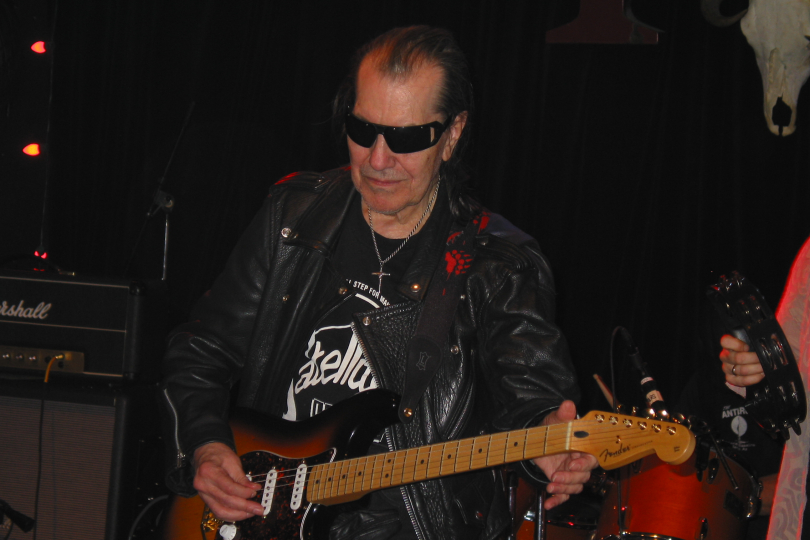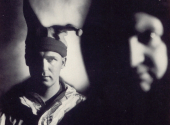
Milestones in Music History #51: Link Wray, The Distortion Wizard
The level of musical maturity shaped by the artist Flying Lotus, featured in our last episode, made us aware of how today the distinction of genres has been completely transcended, leaving room for endless possibilities of expression. To get to such a level of freedom, there needed to be an agent in the history of music that allowed music to expand. It is an act by a legendary name – Link Wray.
As is well known, freedom is very often achieved through toil and sweat. In the succession of historical events, music has always accompanied the fortunes of humanity, expressing what was thought but not said. The urge to communicate ideas, opinions and feelings, was sometimes so strong for the human soul that it had to force constraints and cross barriers, or perhaps throw down railings.
An act of violence or vandalism can give rise to something else. The birth of a star requires the collapse of a gaseous nebula; however, as Nietzsche said in his Thus Spake Zarathustra, "One must still have chaos within oneself to be able to give birth to a dancing star." And Link Wray certainly had chaos within himself.
He did not have an affluent childhood; as he recounted, he lived in a hovel without electricity and heating, and went to school barefoot with a few ruined clothes. Although listed on the census as white, they were Shawnee, an indigenous tribe of the Northeast Woodlands, which eventually dispersed in the 18th century.
For that reason, their family was discriminated against by the Ku Klux Klan, whose presence was abundant in North Carolina, and who persecuted anyone who did not conform to their genetics by tying them to trees, whipping them, or even killing them. But in 1942 the family moved to Portsmouth, Virginia, and things improved.
In Portsmouth Link became involved in music and with his brothers, Doug, Ray and Vernon, plus two other musicians, Dixie Neal and Shorty Horton, formed two musical groups: The Lucky Wray Band and The Palomino Ranch Gang. Inspired by country and rockabilly, which was probably the music they were listening to at the time, but with slightly more rock and garage tones.
The stay in Portsmouth was short, and so in 1955, the family left Portsmouth. It was probably a propeller for Link, who began to devote himself to developing further music. Not only that, but with the new lineup, the Ray Men, their approach was much more experimental, and the influences of surf music were abundantly felt. But as said a few lines ago, only with chaos and destruction is there birth.
In fact, by chance, during a sock hop in Fredericksburg, Virginia, the local DJ Milt Green, who had organized that hop, had asked the Ray Men, who were on stage, to perform the song "The Stroll", by the Canadian doo-wop band The Diamonds. But Link didn't know what the DJ was talking about; he didn’t know the song.
But his brother and band drummer Doug, described by Link as one of the loudest drummers in the world, began playing an incessant rhythm and playing with the sticks turned the other way. To match the volume, Link played a heavy succession of power chords and placed the microphone close to the guitar amplifier. The outcome was brutal.
Therefore, they rushed to the studio, trying to replicate that sound. Their original idea was for a piece called "Oddball". But they couldn't. So, Link had the brilliant idea of drilling holes in the amplifier, making holes in the speakers. What happened was phantasmagorical. The resulting sound was heavily distorted, with a touch of fuzz.
The musical composition was handed over to the record company Cadence Records, but Archie Bleyer, boss of the label, was not particularly enthusiastic about it, partly because his amplifiers were pierced with pencils by Link to obtain that live sound. But her stepdaughter, Jackie Ertel, liked it, and she said it sounded like "The Rumble", the gang fight in West Side Story. And so, the title was changed, and "Rumble" was released on the record label in 1958.
Since the term "rumble" was slang for gang fighting, the piece of music was banned in New York and Boston for fear that it would incite street fighting. Regardless, "Rumble" was a hit in the United States and Canada. Thus, Link Wray managed to discover distortion and fuzz, and this was how his long career began, studded with albums and singles up to the year 2000, (he passed away in 2005).
Link Wray was one of the most innovative musicians of his time; he was emulated by many artists also of his time, such as Dave Davies of the Kinks, who, for the recording of the famous single "You Really Got Me", in frustration slashed the speaker cone with razor blades and punched holes into it. Link not only discovered the fabulous world of distortion and fuzz but was also credited with inventing the power chord technique and perfecting the tremolo.
Many of his songs went down in history as incredible hits, such as "Raw-Hide", Link's second single release, the famous "Jack The Ripper", and "The Sweeper" – but it was with "Rumble" that he marked a milestone in music history. The piece was performed by many artists and described by Bob Dylan as the best instrumental piece of all time. At the same time, it went down in history as the only instrumental piece ever banned.
The song was also used in many soundtracks, among those such as Pulp Fiction and the pilot episode of the TV series The Sopranos. Link Wray is considered one of the most influential musicians of all time – Jimmy Page cited him in the documentary It Might Get Loud as one of his major influences. Iggy Pop and Neil Young also cited Link Wray as an influence on their art.
He was a pioneer of distortion and a wizard of experimentation. His brazenness and cockiness enabled him to open up a new world and contributed to the birth of what is commonly referred to as rock. His contribution was fundamental, and his example was followed and extended by one of the most controversial and irreverent musical acts in history, The Crazy World of Arthur Brown, which will be featured in our next episode of Milestones.
How has the use of distortion changed over the years? What are the experimental possibilities today, and what brutal manipulations are made today to produce innovative sounds? Is the musical instrument an object to be wasted and "tortured", or held dear? And who is Link Wray's contemporary today?
Leave your opinion in the comments below!
If you have found an error or typo in the article, please let us know by e-mail info@insounder.org.





